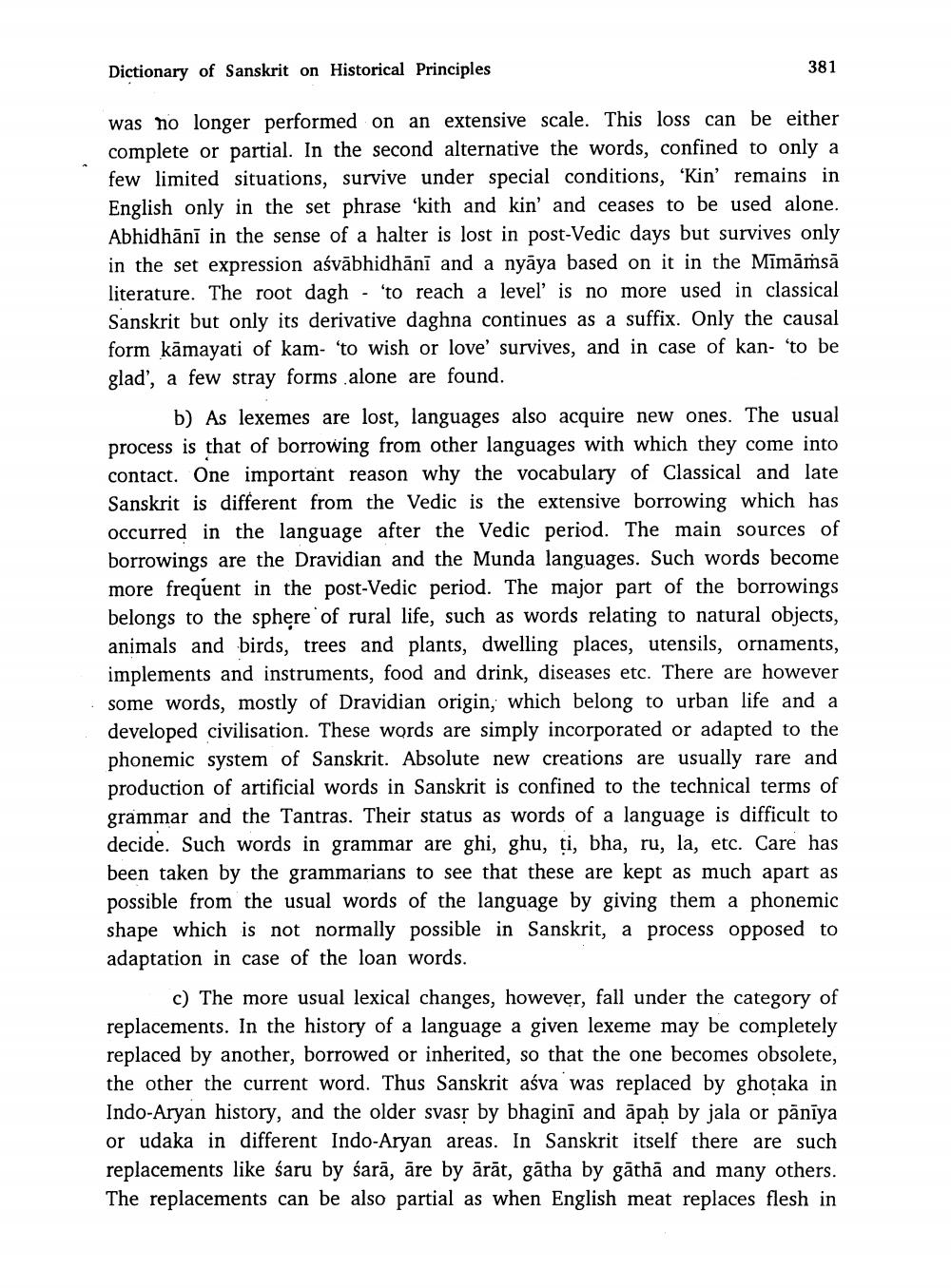________________
Dictionary of Sanskrit on Historical Principles
381
was no longer performed on an extensive scale. This loss can be either complete or partial. In the second alternative the words, confined to only a few limited situations, survive under special conditions, 'Kin' remains in English only in the set phrase “kith and kin' and ceases to be used alone. Abhidhānī in the sense of a halter is lost in post-Vedic days but survives only in the set expression aśvābhidhānī and a nyāya based on it in the Mimāṁsā literature. The root dagh - 'to reach a level is no more used in classical Sanskrit but only its derivative daghna continues as a suffix. Only the causal form kāmayati of kam- 'to wish or love' survives, and in case of kan- 'to be glad', a few stray forms alone are found.
b) As lexemes are lost, languages also acquire new ones. The usual process is that of borrowing from other languages with which they come into contact. One important reason why the vocabulary of Classical and late Sanskrit is different from the Vedic is the extensive borrowing which has occurred in the language after the Vedic period. The main sources of borrowings are the Dravidian and the Munda languages. Such words become more frequent in the post-Vedic period. The major part of the borrowings belongs to the sphere of rural life, such as words relating to natural objects animals and birds, trees and plants, dwelling places, utensils, ornaments, implements and instruments, food and drink, diseases etc. There are however some words, mostly of Dravidian origin, which belong to urban life and a developed civilisation. These words are simply incorporated or adapted to the phonemic system of Sanskrit. Absolute new creations are usually rare and production of artificial words in Sanskrit is confined to the technical terms of grammar and the Tantras. Their status as words of a language is difficult to decide. Such words in grammar are ghi, ghu, ti, bha, ru, la, etc. Care has been taken by the grammarians to see that these are kept as much apart as possible from the usual words of the language by giving them a phonemic shape which is not normally possible in Sanskrit, a process opposed to adaptation in case of the loan words.
c) The more usual lexical changes, however, fall under the category of replacements. In the history of a language a given lexeme may be completely replaced by another, borrowed or inherited, so that the one becomes obsolete, the other the current word. Thus Sanskrit aśva was replaced by ghotaka in Indo-Aryan history, and the older svasr by bhagini and āpah by jala or pānīya or udaka in different Indo-Aryan areas. In Sanskrit itself there are such replacements like saru by sarā, āre by ārāt, gātha by gāthā and many others. The replacements can be also partial as when English meat replaces flesh in




